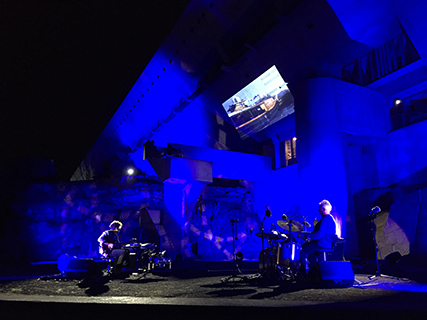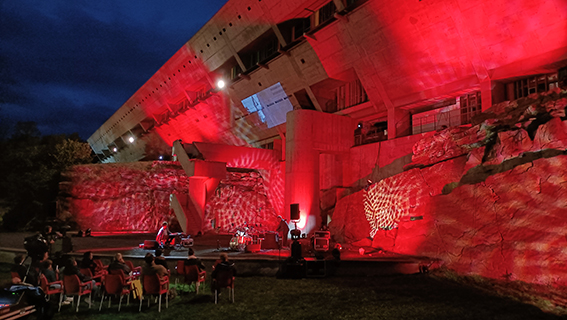International Standing Conference 2022 – French Presidency – News
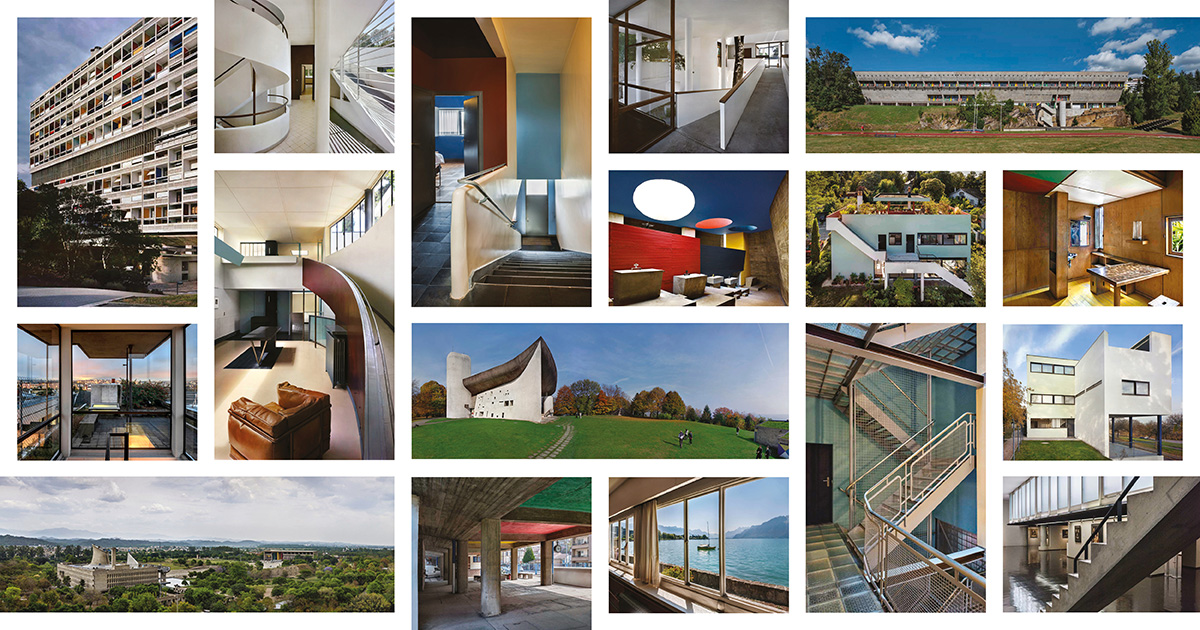
On July 17, 2016, UNESCO inscribed “The Architectural Work of Le Corbusier, an outstanding contribution to the Modern Movement” on the World Heritage List.
Discover the commitment of the States, institutions, owners, managers, elected representatives, inhabitants and experts who preserve, keep alive and transmit Le Corbusier’s work.
Chosen from the work of Le Corbusier, the 17 listed sites make up a transnational series associating 7 States. Together, they provide an exceptional response to the fundamental issues of 20th century architecture and society.
They were all innovative in the way they reflected new concepts, and together they spread the ideas of the modern movement throughout the world. Between the 1910s and 1960s, the modern movement sparked an exceptional debate of ideas on a global scale, invented a new architectural language, modernized architectural techniques and sought to meet the social and human needs of modern man.
As part of the permanent international conference under the French Presidency of the transnational property inscribed on the World Heritage list, the Direction Régionale des Affaires Culturelles of Île-de-France is organising an international study day bringing together all the players concerned.
This day will present the main advances since the inscription in terms of protection, management of buffer zones, appropriation of sites, tourism development and maintenance or restoration projects.
To celebrate the centenary of the Villa “Le Lac”, the management association is organizing a retrospective exhibition 1923-2023 presenting the history of the villa, with photos, documents and testimonies of people who knew the Villa at the time it was inhabited: architects, historians, friends of the family, inhabitants of Corseaux and the region.
Visits-conferences, film screenings and concerts will take place in the garden (piano concert, with the repertoire of Le Corbusier’s mother…).
At the end of their residency, musicians will produce a work (available in 45 rpm and digital from Christmas 2023).
Finally, a very convivial dog competition will be organized on the “dog jump” made by Le Corbusier for his mother’s dog.
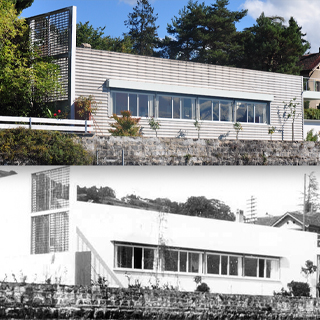
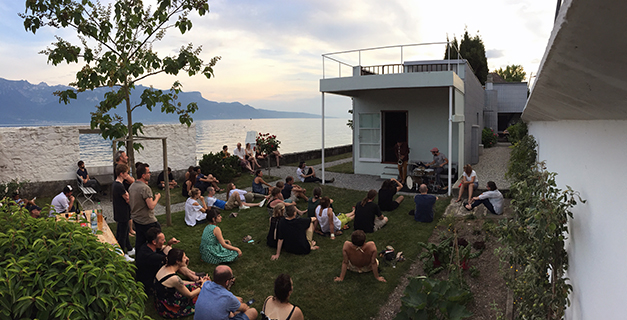
In the digital age, the Maison La Roche will soon be visitable online like Le Corbusier’s apartment-studio. The Maison La Roche, always open to visitors, hosts exhibitions.
To the rhythm of the great Parisian cultural events. During Paris Design Week 2022, it presented Anthony Guerrée and his exhibition Fragments; during Paris + the exhibition Carla Accardi à la Maison La Rocheproposed by the Massimo de Carlo gallery. Since November, the photographer Gérard Rancinan and the author Caroline Gaudriault present L’Absolu et 45 variations de pièces de fer on the occasion of Paris Photo.
The Maison Jeanneret continues to be the crossroads of Le Corbusier research: it houses the resource center of the Foundation Le Corbusier. It is the starting point for many projects and provides access to Le Corbusier’s archives. In January 2023, the Fondation will organize its XXIst Meeting at the Centre Pompidou.
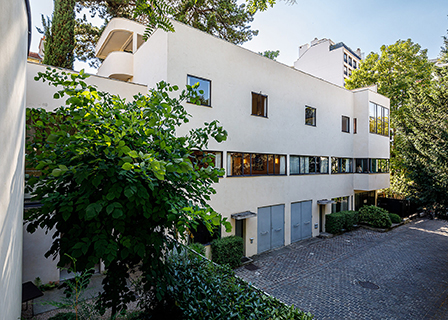

In view of the celebration of the Centenary of the Cité Frugès-Le Corbusier in 2024-2026, a major campaign of conservation and development work on the Cité is being initiated with, as a first step, a new restoration of the show house. The consultation for this restoration involving BIM technology will be launched in the coming weeks.
The City of Pessac is offering a new format for discovering or rediscovering the Cité Frugès since the inscription of Le Corbusier’s architectural work on the World Heritage List: a sensitive sound experience in 6 episodes to tackle everything that makes the Cité Frugès a high point in the history of architectural, constructive and social experimentation and to appreciate all its subtleties.
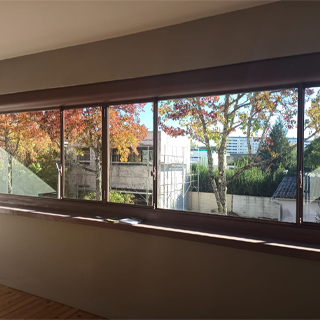
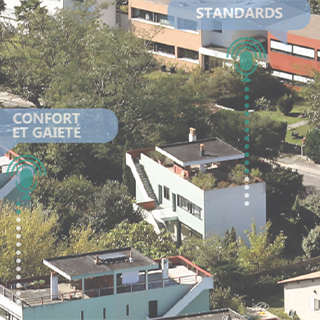
The restoration of the Maison Guiette was to correct the damage and alterations that had accumulated over the years. The architect George Baines had carried out a first restoration in 1986.
The architect and urban planner Luc Deleu wanted to analyse Le Corbusier’s drawings and the historical evolution of the building to be as faithful as possible to the architect’s project .
The main challenges of this restoration were: the use of a minimum of different materials for the whole terrace and the upstands, the preservation and restoration of the existing steel window frames, the fidelity to the original colours but also the improvement of the acoustics.
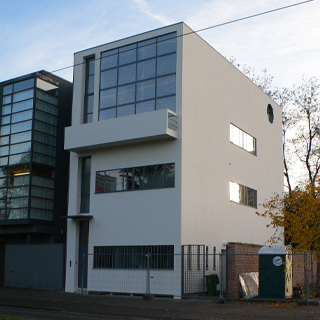
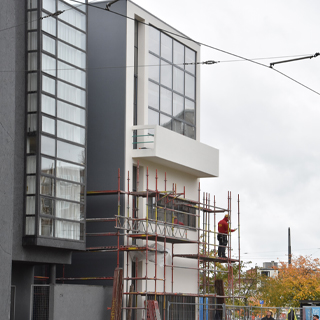
In 2027, the Weissenhof-Siedlung will celebrate its 100th anniversary. In the same year, an international construction exhibition with 90 projects will take place in the Stuttgart region. Several thousand visitors are expected in Stuttgart and at the Weissenhof. A reception building is needed. The city of Stuttgart, in cooperation with the state of Baden-Württemberg, has therefore launched an ideas competition for architects.
Participants in the competition were asked to address topics such as urban development, open space design, monument protection, mobility and urban structure and to present global solutions. The proposed buildings had to take into consideration the restrictions of the buffer zone of Le Corbusier’s two World Heritage houses.
The Stuttgart architects Schmutz & Partner won the first prize together with their partners Scala Pfrommer + Roeder. The next step is to look for partners who can turn the idea into a real building, while using sustainable construction techniques.

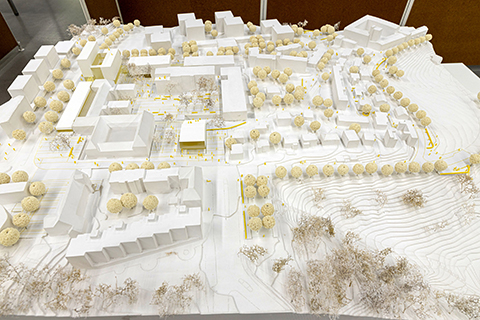
In order to improve the conservation and the state of presentation of the interiors of the Villa Savoye, the Centre des Monuments Nationaux is continuing to maintain the interiors. The perception of the original space of the great hall will be improved with the installation of new furniture for the reception-ticket office.
At the end of February 2023, virtual reality will come to the villa with a co-production by CMN, Lucid Realities and the Foundation Le Corbusier. The experience, based on Le Corbusier’s words and his exchanges with Mme Savoye, proposes to go from the drawing to the model and then to the construction site of the 1930s in order to live and better understand the 5 points of modern architecture.

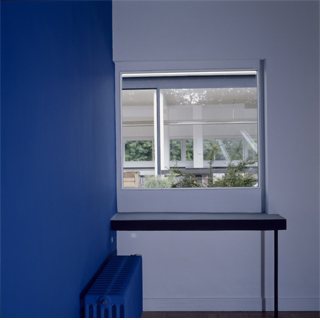
On the occasion of the 50th anniversary of the World Heritage Convention, the Swiss Commission for UNESCO has produced three short films on Le Corbusier’s architectural work, an exceptional contribution to the Modern Movement, one of which is devoted to the Immeuble Clarté. These films will be presented on 8 December on the occasion of the ICC and will be available on the website dedicated to the series.

The Immeuble Molitor is the subject of a project to restore the facades and common areas. The work will begin with the façade on Rue de la Tourelle, on the Boulogne side, at the beginning of 2023.
At the top of the building, the apartment-studio will remain open during the works. It is also possible to take advantage of its virtual visit that includes numerous archival documents, including video interviews with Le Corbusier.
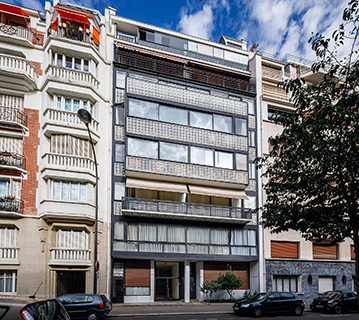
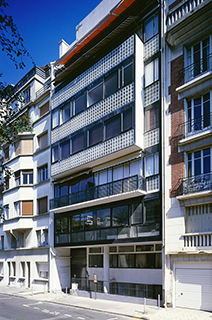
On October 14, 1952, the Unité d’Habitation de Marseille was inaugurated in the presence of Le Corbusier, his friend Eugène Claudius-Petit, Minister of Reconstruction and Urban Planning, and all his collaborators from the workshop at 35 rue de Sèvres. 70 years later, the residents and users have paid tribute to him in many celebrations.
On December 4, a screening of Gerard & Kelly’s film Bright Hours will take place at MAMO, followed by a roundtable discussion with the artists. This film, shot in the Unité d’habitation, reinvents Le Corbusier’s meeting with Josephine Baker during a transatlantic cruise in 1929.
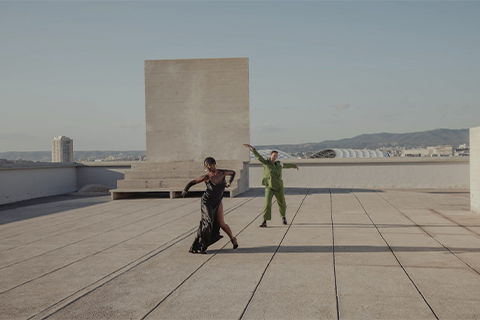
The managers of the House participated in the creation of the MAMM (Adela Margarita Martinez Museum of Architecture and Urbanism), to present several virtual conferences and seminars during the health crisis. They organized exhibitions and “Open Air Museum” sessions. Inspired by the teachings of Jane Jacobs, they offer thematic regional tours or walks through the streets of the city, supervised by professionals of the MAMM. These architectural itineraries usually end in the pedestrian zone of Le Corbusier Boulevard, created in 2021 by the unanimous vote of the local legislature at the suggestion of the Provincial College of Architects and the Municipal Office of Tourism.
Different educational activities were carried out with children, in accordance with the university project “I am humanity. This is also my home” of the Faculty of Architecture and Urban Planning of the National University of La Plata (FAU-UNLP), which has developed a deeper connection with primary and secondary schools in the city of La Plata, the province of Buenos Aires and the CABA.
On November 12, the House participated in the Night of the Museums with the slogan “Tango and Casa Curutchet, two world heritages”. On the program: guided tours of the House and the discovery of the pedestrian zone of Le Corbusier Boulevard, where more than two thousand people gathered.

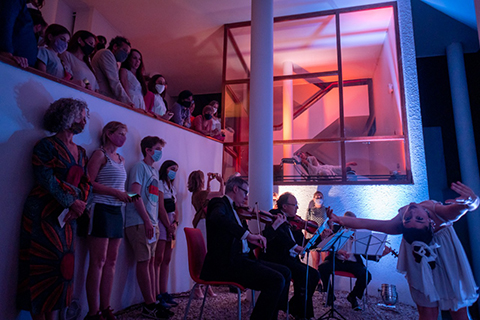
In order to increase the visibility of the factory, an Archinote guide has just been published to retrace the genesis of the building but also to define its characteristics and specificities.
Despite the constraints of its economic activity, the factory offers occasional guided tours by reservation: info@asso-lc48.com
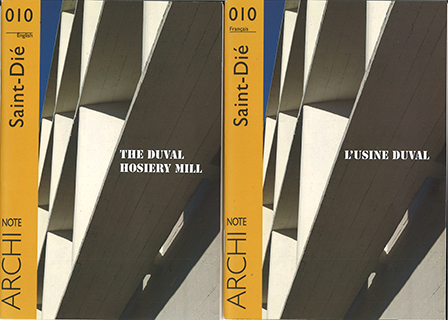
The UNESCO sites of Burgundy Franche-Comté have created a working group to promote the wealth of world heritage: to carry out joint actions and share their experiences.
In 2023, the Porterie will propose an itinerant exhibition in three languages (French, English and German) on the site of the Bourlémont hill in Ronchamp. After the restoration of the southern façade, work is continuing on the western façade of Notre-Dame-du-Haut.
On November, the Grand Prix du livre d’architecture has been awarded to Claude Maisonnier for his beautiful book on the genesis of the Ronchamp Chapel. With precision and rigour, this book looks back revisits at the creation of “a masterpiece” by detailing the creative and constructive process of the building, by calling on upon and analysing in particular the archives of the foundation, but also the archives and memories of André Maisonnier, a major collaborator in the development of the Chapelle Notre-Dame du Haut, and father of the author.
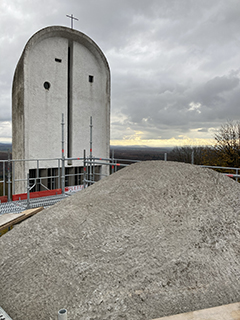
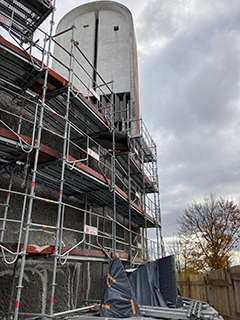
In order to make young people aware of the richness of the local architectural heritage, the Monuments Centre offers a programme of off-site activities: mini-conferences, outings, workshops and exhibitions, aimed at a school audience.In order to make young people aware of the richness of the local architectural heritage, the Monuments Centre offers a programme of off-site activities: mini-conferences, outings, workshops and exhibitions, aimed at a school audience.
The Cultural Association Eileen Gray Etoile de Mer Le Corbusier launches a call for applications, for a residence in 2023. This call is addressed in priority to young artists, architects, designers, writers, musicians or researchers in history of art, or architecture, or landscape, French or foreigners wishing to deepen or to realize their work by a direct contact with the Mediterranean, its history, its architecture and / or its vegetation.
Deadline: January 31, 2023
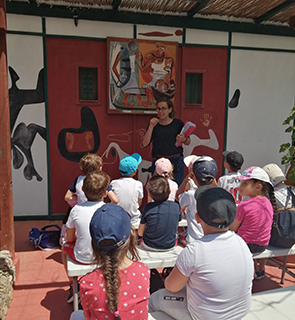
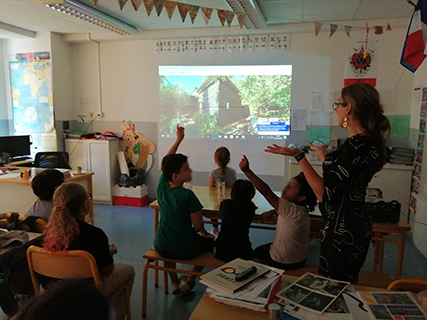
Students and faculty of the Chandigarh College of Architecture made models of some of Chandigarh’s iconic buildings to display during an exhibition in the Le Corbusier-designed museum. The Department of Tourism and the CCA organized a tapestry workshop for students in the Le Corbusier Center and a conference on heritage conservation.
Heritage impact studies were carried out according to the new ICOMOS guide by a team of heritage architects from Chandigarh Administration, with the collaboration of the Fondation le Corbusier. Restorations of the tapestries of the High Court and the interiors of the Assembly are underway.
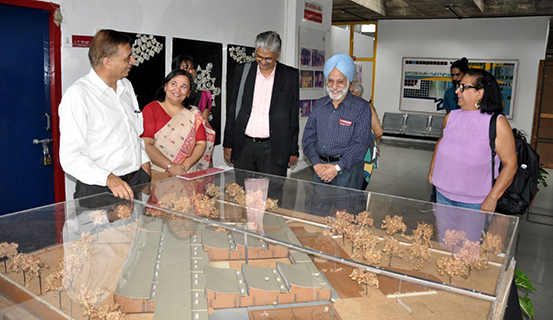
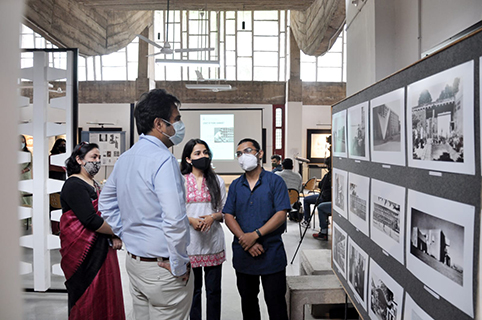
On the initiative of Frère Charles Desjobert, heritage architect, the Couvent de La Tourette, is collecting and listing photographs retracing the history of the place, the daily life of the brothers since their installation, the construction of the building and its various developments. The Couvent and the Fondation Le Corbusier are launching a call for the sharing of photographs to enrich our knowledge of the building and its use.
From 6th of September to 24th of December 2022, the Couvent de La Tourette welcomes Giuseppe Penone for a new exhibition. Works have been specifically created by the artist, who has had the opportunity to stay in the convent several times. Influenced by Le Corbusier’s architecture, he paid particular attention to the traces of the wooden planks perceptible on the rough concrete walls in order to make rubbings to establish an analogy between the skin of the wood and that of the concrete.
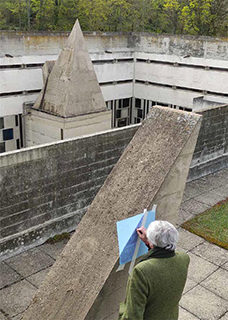
The museum’s parvis was restored from October 19, 2020 to April 8, 2022. In order to improve the functioning of the museum, various modifications have been made to the forecourt since its opening in 1959. In response to ICOMOS’ observations that part of the forecourt no longer corresponds to its original state, the museum took advantage of the renovation of the waterproofing of the roof of the temporary exhibition galleries to bring the forecourt as close as possible to its 1959 state.
When the museum was built, the main gate was on the west side. The current restoration has minimized the vegetation in the forecourt. As far as possible, the approach to the door on the west side, the railings and the location of Rodin’s Le Penseur and Les Bourgeois de Calais have been restored to their original state. The joints of the floor of the forecourt, laid out in Modulor according to Le Corbusier’s wishes, have also been restored.
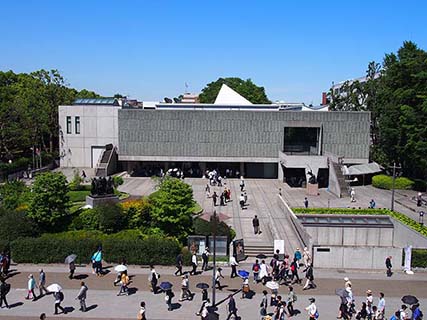
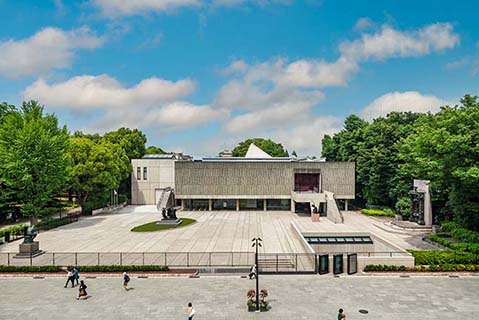
For more than fifty years, the Maison de la Culture of Firminy has offered a diverse cultural program.
This is the case of the future exhibition that will take place in the foyer-bar, carried by the students of the City of Firminy, from December 16 to February 21.
The international exhibition (CO)HABITATION questions living together within the urban and European space. The children (re)discover their city, the twin city of Murska Sobota (Slovenia) and the city of Vienna (Austria), through the prism of architecture and its cultural and inventive aspects. The works are created by students of 4th and 5th Grade as well as 6th Grade in a spirit of collaboration, and highlight the mix within the classes, and between the institutions and cities partners of the project.
